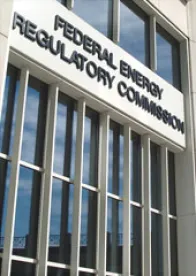The Federal Energy Regulatory Commission (FERC) issued a statement on May 18, 2018 clarifying that the Agency will only analyze both upstream and downstream environmental effects of pipeline Greenhouse Gas (GHG) emissions when those effects are “sufficiently causally connected to and are reasonably foreseeable effects of the proposed actions.” The policy statement was part of an order denying a request for rehearing of the certificate FERC granted to the Dominion Energy Transmission’s pipeline project. The policy statement represents an attempt by FERC to narrow the D.C. Circuit Court of Appeal’s decision in the August 2017 case Sierra Club v. FERC. The Agency explained that, “[f]or a short time, the Commission went beyond that which is required by NEPA” when it “provided the public with information regarding the potential impacts associated with unconventional natural gas production and downstream combustion of natural gas” for certain projects. On July 16, 2018, pipeline opponents requested the D.C. Circuit review FERC’s decision on the project on the basis that FERC should have analyzed the downstream GHG impacts.
In August 2017, the D.C. Circuit Court of Appeals in Sierra Club v. FERC ruled FERC provided an insufficient analysis of downstream GHG emissions, vacated the Southeast Market Pipelines Project’s certificates, and directed the Agency to issue a supplemental environmental impact statement (SEIS). Specifically, the court determined the Agency should have considered the “amount of power-plant carbon emissions that the pipelines will make possible” or explained why it could not do so. The basis for this conclusion was that agencies undertaking National Environmental Policy Act (NEPA) reviews should consider indirect environmental effects that are reasonably foreseeable in addition to direct effects.
On February 5, 2018, FERC issued an SEIS as directed, and on March 14, 2018, a divided FERC finally re-issued the certificates for the project based on the revised analysis. However, the order for re-authorization, and underlying SEIS, still maintained the position that “there is no widely accepted standard to ascribe significance to a given rate or volume of GHG emissions.” The Agency and industry representatives have sought extensions in order to file petitions for writ of certiorari to the US Supreme Court.
Mountain Valley Pipeline Denial Rehearing
FERC is proceeding with approvals of pipeline projects under this narrower analysis and is in the process of revising its decades old pipeline analysis policy. In line with its May 2018 statement, FERC recently denied a request for rehearing on June 15, 2018 on its certificate granted to the Mountain Valley Pipeline. Multiple parties had requested a rehearing in November 2017, including individuals, environmental groups, and counties. Relying on the decision in Sierra Club v. FERC, parties argued that FERC failed to adequately analyze and quantify the climate change impacts of the downstream use of natural gas being transported by the project. While FERC did not deny the effects of climate change in the final environmental impact statement (EIS), the Agency countered that it did “not believe GHG Emissions from the downstream use of natural gas transported by the project fall within the definition of indirect impacts or cumulative impacts.” Specifically, the project in question differed from the one in Sierra Club v. FERC, the Agency explained in a footnote, because the end source of the gas was the market instead of an identifiable gas-fired electric generating plant. Furthermore, FERC pointed out that it did address downstream consumption emissions in its Final Environmental Statement.
FERC Seeking Input on Pipeline Policy
It remains to be seen if FERC will continue this limitation on GHG emissions analysis when it issues its revised pipeline policy. On April 19, 2018, FERC announced it was seeking input on its policies on interstate natural gas transportation facilities, and the public comment period ended on July 25, 2018. One of the four general areas FERC highlighted included “the Commission’s evaluation of alternatives and environmental effects under NEPA and the NGA [Natural Gas Act].” The current policy statement sources from 1999 and is entitled “Certification of New Interstate Natural Gas Pipeline Facilities – Statement of Policy” (Docket No. PL99-3-000).” The US EPA submitted a comment recommending use of its tools by FERC when the Agency does proceed with GHG emissions analyses, but the agency recently clarified its comment was not meant to address the question of whether FERC should proceed with such analysis.
In spite of the D.C. Circuit’s decision in Sierra Club v. FERC, the Agency is attempting to narrow the scope of pipeline projects in which it has to provide a full analysis of upstream and downstream GHG emissions. Recent orders have been split along party lines among the five commissioners. While such a policy position may be favorable to pipeline projects seeking certificates from FERC, it also presents the risk of further legal challenges by environmental groups as to the sufficiency of FERC’s review of GHG emissions under NEPA and the Natural Gas Act. Such a risk can have tangible impacts on a project, such as when the pipeline under consideration in the Sierra Club v. FERC case faced the risk of shutdown in spring 2018.




 />i
/>i

